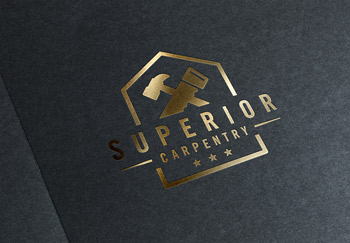
Digital enhancements are the digital application of spot colors, white or clear toner, spot or dimensional varnish, foil, or other effects to printed material. When incorporated correctly with a design, they can add a stunning visual and tactile appeal to the printed sheet. Depending on the hardware solution used, many of these effects can be applied in one pass, in-line with four-color process. Because all of these techniques are 100% digital, any of these effects can be incorporated with variable data printing, something you could not do just a few short years ago.
Digital Enhancement Effects
Spot colors. We all know that spot colors can be created by mixing CMYK inks and toner, but with enhancement effects, a separate digital ink or toner color can be printed in addition to CMYK. Why? Not all spot colors can be reproduced faithfully with CMYK toners and ink, so to get the most accurate color match, a spot color is printed. This is especially important for brand colors and packaging where color match is essential.
White and clear toner. White toner can produce creative effects when printed on colored paper stock. White solids can also be printed on colored paper; process color can be printed on top of the white, creating another unique visual effect. Clear toner can be printed as a spot (on images, for example), visual impact, or overall to provide more protection for pieces. Note that clear toner cannot add dimension, only a gloss effect, and only spot UV can add both gloss and dimension.
Spot and dimensional UV. Digital spot UV can be added to the final printed piece that adds visual impact. Dimensional spot UV is typically applied to a specific image or graphic elements to add physical dimension, or a raised, tactile feel to the page. Depending on the process used, there are many possibilities for the coating thickness. The thickness of the UV coating can vary based on manufacturer and application — anywhere from 15 microns to 100 microns or more — to create a dimensional, embossed effect. Adding these effects appeals to more of our sensations (not only visual, but touch as well).
Spot foil. Traditionally, these foil effects were created using letterpress and a hot metal die to transfer a thin layer of metallic foil to the surface of the printed sheet. These foil effects can be applied digitally, which allows for faster turnaround and lower production costs. And because it’s applied digitally, it allows for variable data printing of these foil effects, something that was impossible just a few years ago. The most common color types of foil are silver and gold, but there is a wide variety of other metallic colors and tones available as well.
Toner over foil. This effect is achieved with the blend CMYK toner and the reflective qualities of the foil. First, a solid foil is applied to the paper. Next, a CMYK image is printed on top of the solid foil. The result is an iridescent spectrum of colors with a shimmery, metallic effect.
End Goal: Customer Experience and Response
All of these unique digital enhancement options are opportunities that help to cut through the marketing noise and clutter. For years we’ve known that a consumer’s experience is both visual and tactile. For the customer, it’s all about getting attention and response. A customized piece that contains varnish, foil, white ink, and other digital effects creates a connection and adds value to the printed piece. What’s in it for the marketer? This connection becomes ownership — the experience of both seeing and touching an object increases the perceived ownership. The higher the perceived ownership, the more likely one is to react or buy.
For more tips and tricks about this topic, check out my "Preparing Files for Digital Enhancement" e-learning course in the PRINTING United Alliance iLEARNING+ Center.